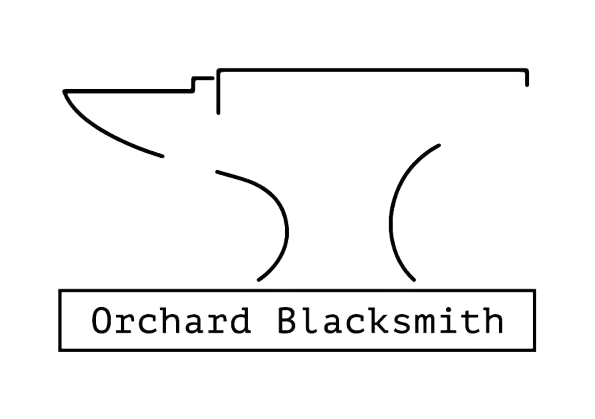Blacksmithing Trends in 2025: Crafting the Future with Tradition
Blacksmithing, often associated with ancient practices and medieval times, has evolved into a fascinating blend of tradition and innovation in recent years. In 2025, the craft is experiencing a resurgence, with artisans embracing both the ancient techniques of forging and modern trends that elevate the craft into new artistic and practical realms. Whether it’s creating functional tools, fine art pieces, or sustainable works, here are some of the key blacksmithing trends we’re seeing this year.
1. Sustainability and Eco-Friendly Practices
As the world continues to shift toward more sustainable practices, blacksmithing is not left behind. Many modern blacksmiths are turning to recycled and repurposed metals, ensuring that their materials are environmentally friendly. Rather than using virgin metals, blacksmiths are finding creative ways to incorporate scrap metal, old tools, and even salvaged iron to create new, functional art.
This trend not only cuts down on waste but also adds a layer of history to the pieces, as the reused materials often carry their own stories and imperfections, which make each work unique. Blacksmithing schools and workshops are also increasingly focused on teaching sustainable methods, inspiring a new generation of smiths to consider the environmental impact of their work.
2. Blending Traditional Techniques with Modern Technology
While the sound of hammer striking an anvil still echoes in blacksmithing shops, modern technology is quietly making its way into the forge. The rise of 3D modeling software, CNC machines, and even plasma cutters has allowed blacksmiths to experiment with intricate designs and shapes that would have been incredibly time-consuming by hand.
However, the best artisans still prioritize traditional forging methods for their craftsmanship. The blending of new technologies with classic techniques allows for innovation while maintaining the essence of hand-forged metalworking. Expect to see more collaborations between traditional blacksmiths and tech-driven industries, especially when it comes to architectural features, custom furniture, and high-end design projects.
3. Customization and Bespoke Work
Consumers are increasingly interested in unique, one-of-a-kind items, and blacksmiths are answering the call. Whether it’s a custom knife, a hand-forged railing, or personalized jewelry, more people are turning to blacksmiths to create bespoke, functional works of art. This trend is particularly prevalent in the knife-making community, where collectors and outdoor enthusiasts seek custom blades tailored to their specific needs.
Customization isn’t just limited to function, either. Blacksmiths are using their skills to create intricate, personalized designs that reflect their clients' tastes, from custom metal art pieces to bespoke furniture. The trend of individuality and personal connection to crafted objects is becoming a significant driving force behind the revival of blacksmithing.
4. Mixed Media and Artistic Exploration
Beyond the functional, blacksmithing has found a foothold in the world of fine art. More blacksmiths are experimenting with mixed media, integrating materials like glass, wood, ceramics, and even stone into their metal works. These artists are using their forge to explore the boundaries between materials, creating stunning sculptures, jewelry, and other pieces that defy traditional expectations of metalwork.
This intersection of materials and craftsmanship not only highlights the versatility of blacksmithing but also proves that metalwork is as much an art form as a practical skill. The blacksmithing community is embracing new styles and approaches, blending different materials to push the boundaries of what’s possible with metal.
5. Forging for a Purpose: Functional Art
While artistic blacksmithing continues to rise in popularity, there’s also been a resurgence in creating functional yet beautiful items. Blacksmiths are increasingly focused on producing high-quality, handcrafted tools and objects that combine utility and aesthetics. Examples include artisanal kitchenware like hand-forged knives and cookware, elegant door hardware, and hand-crafted garden tools.
In addition, the demand for well-made, durable items has fueled the revival of blacksmithing as a means of creating heirloom-quality pieces that last for generations. Consumers are looking for products that reflect quality craftsmanship, and blacksmiths are meeting that demand by creating functional art pieces that hold both beauty and utility.
6. Rise of Blacksmithing as a Crafting Hobby
Another growing trend in the world of blacksmithing is its increasing popularity as a hobby. Thanks to YouTube, social media, and the growing DIY culture, more people are discovering the joy of working with metal. Weekend warriors and budding blacksmiths are setting up small forges in their garages or workshops to try their hand at crafting knives, tools, and decorative items.
Blacksmithing schools and online courses are making it easier for newcomers to learn the basics of the craft, with many offering hands-on workshops for all skill levels. As interest continues to grow, blacksmithing is becoming not only a profession but also an accessible and rewarding hobby for people of all ages.
7. Revival of Traditional Styles and Designs
While modern blacksmithing embraces new techniques, there’s also a notable trend in the revival of traditional designs. Many blacksmiths are returning to historical methods, reviving techniques passed down through generations, and recreating works based on ancient patterns and motifs.
This focus on historical accuracy has led to a renewed interest in ancient tools, weapons, and architecture. Whether it’s creating period-accurate swords for re-enactments or crafting traditional wrought-iron gates, blacksmiths are preserving the rich history of their craft while ensuring these ancient techniques live on in the modern world.
Conclusion
The blacksmithing trends of 2025 demonstrate a fascinating balance between tradition and innovation. As blacksmiths continue to blend old-world techniques with new technology, embrace sustainability, and cater to the growing demand for customization, the craft is evolving into an exciting space where artistry and functionality meet. Whether you're a seasoned artisan or a hobbyist, the world of blacksmithing is brimming with opportunities for creativity and craftsmanship in 2025 and beyond.
